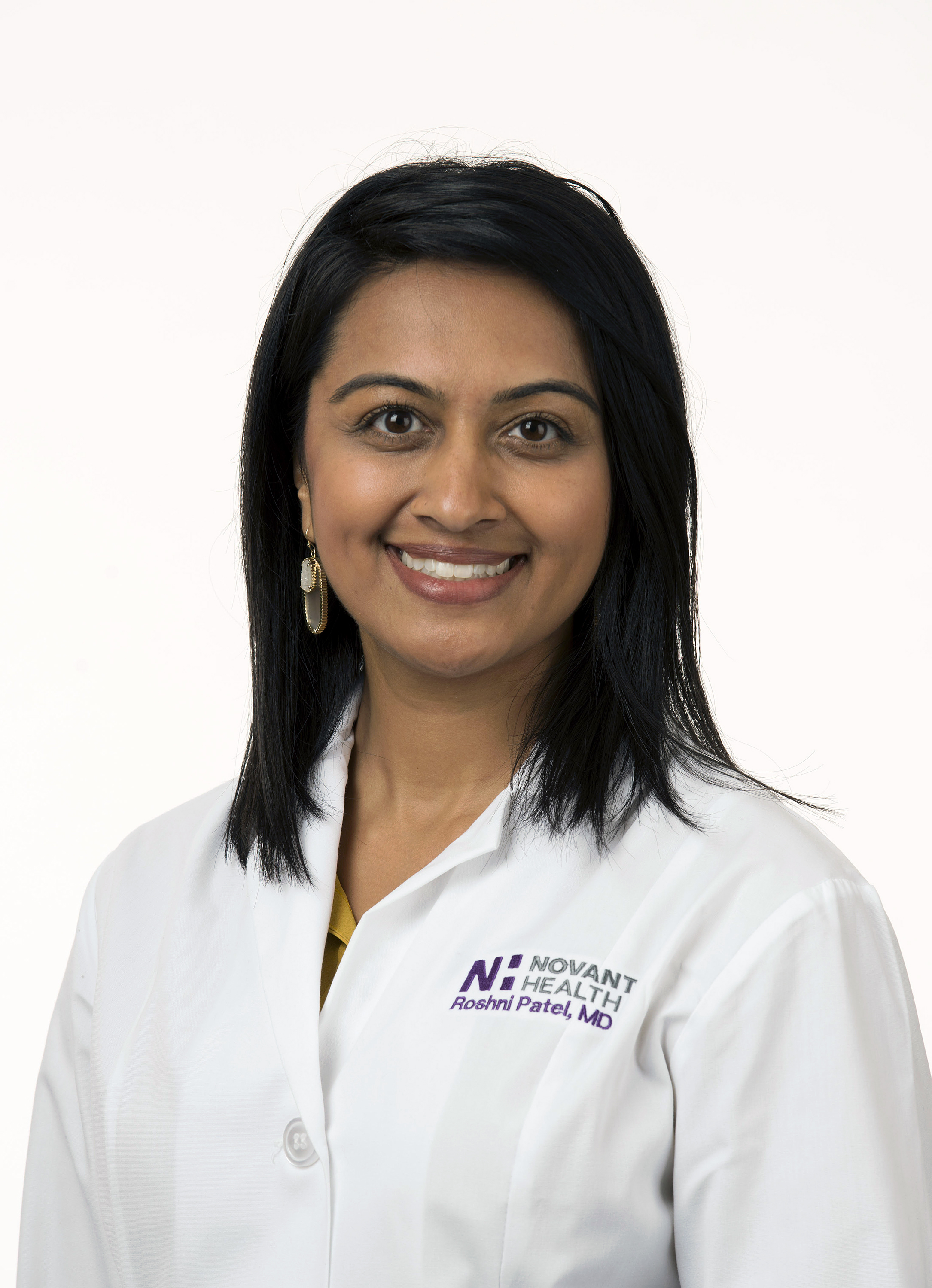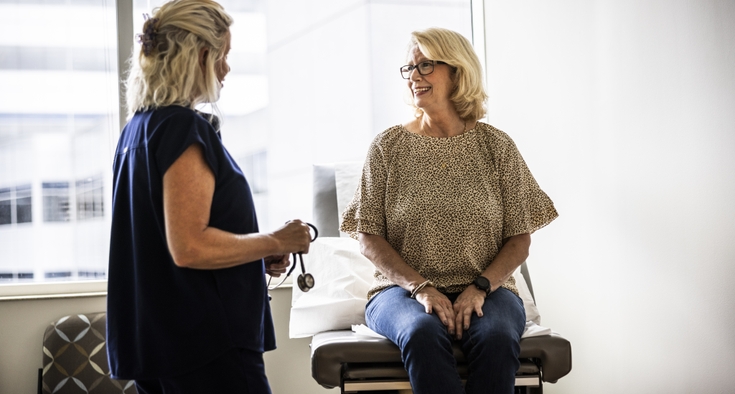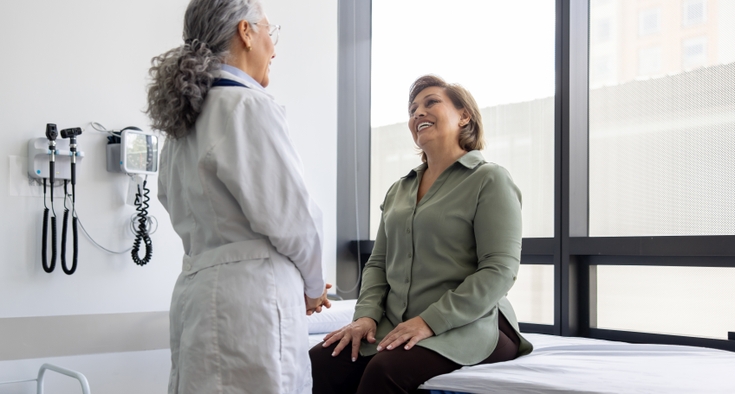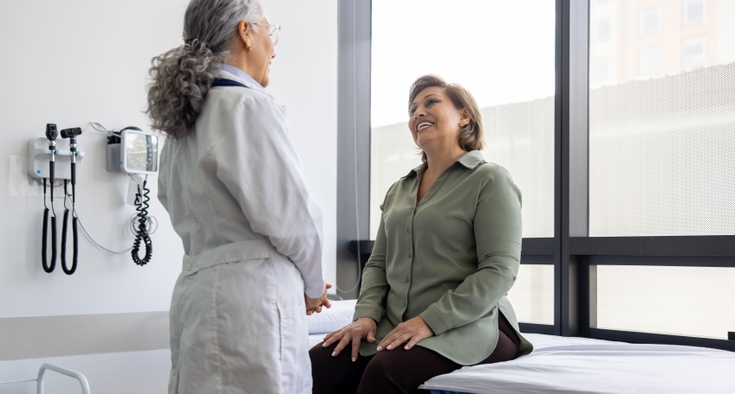If an expert could help assess your risk for a slew of diseases — and possibly lower that risk — would you spend 30 minutes to find out how?
That’s what your yearly physical with a primary care physician is all about — and why that half-hour appointment is necessary for women to complement your annual visit to the gynecologist. It’s a chance to ask questions and discuss options and possible testing. Think of it as a one-two punch to fight chronic illness.

"There are going to be differences in the types of discussions that you want to have," said Novant Health family medicine physician and chief strategy officer of primary care services, Dr. Roshni Patel.
While an OB-GYN specializes in women’s reproductive health, Patel and other primary care physicians take a big-picture view of disease prevention. It’s important to note that 60% of Americans have a chronic health condition that can lead to a lower quality of life, or even death, without proper monitoring and care by a doctor.
Among other things, primary care physicians will discuss current guidelines on recommended screening tests and immunizations. They’ll look at your family history, your weight, what you eat and drink, indicators like blood sugar and cholesterol and how active you are. The goal: To prevent you from becoming one of the more than 38 million Americans living with diabetes or the 805,000 who suffer a heart attack each year.
And if medication or lifestyle changes are indicated, they’ll help you get started and stay on track. Your PCP is an empathetic coach focused on keeping you as healthy as possible for as long as possible. Regular visits with your PCP and gynecologist for women are crucial to help keep health needs managed best. The preventive visit is one touch point, but sometimes it may take additional visits to tackle other issues.
Patel explains why all women need to make — and keep — this yearly date with their primary care physician.
Find the care that's right for you.
You’re covered.
Most insurers cover preventive care at no cost when you use an in-network provider. That’s because such care helps a doctor spot potential problems early, when they may be easier (and less costly) to treat. You pay for your insurance, so get your money’s worth! Your insurer’s website should spell out the specific services that you’re entitled to. (Seniors with original Medicare, see the box below.)
It’s easy to get ready.
Using MyChart to register and update your health information will save time during your visit. If you enroll in text notifications, we’ll send you a link to get you started.
Even if your breast exam and Pap test are done at the OB-GYN’s office, wear comfortable clothes that are easy to take off and put on to make it simpler for you during the examination.
Bring your medications — even those from other doctors — and supplements for review. This helps head off potentially harmful drug interactions.
This is 30 minutes just for you.
I’ll begin by asking if anything new or different has been happening since your last visit. We’ll check MyChart to be sure you’re up to date with immunizations and routine tests like your mammogram or colon cancer screening, which are keys to cancer prevention — or get these scheduled, if needed. (There are a few ways to screen for colon cancer, and we’ll discuss your preferences and needs.)
Because genetics play a big part in your risk for disease, we’ll talk about your family health history. Your doctor is specifically interested in any health issues affecting your parents, grandparents, siblings and children, especially changes since your last appointment — newly diagnosed heart disease, cancer or diabetes, for example.
I make it a point to remind women that humans are almost 80% water, and it’s important to stay hydrated. Most of us need to drink more.
Any blood or urine testing warranted during the preventive visit could be ordered but may generate an additional charge depending on your insurance plan. The tests we order are specific to your personal health and disease risks.
Identify significant threats before they become problems.
Conditions like high blood pressure and high cholesterol pose serious health risks, including heart attack and stroke. But you can’t always tell when your levels are high. That’s why it’s important to have your blood pressure and cholesterol checked at least once a year.
If you develop diabetes, you’re more apt to experience symptoms — excessive thirst or hunger, frequent urination, blurry vision or extreme fatigue, for instance. But sometimes, they’re so mild they go unnoticed. Early detection can get diabetes treatment started and head off serious complications like nerve damage and heart, kidney and eye disease.
If your family history or your exam indicates you’re at risk for chronic disease, we want to intervene quickly. We can prescribe medication to control diabetes, high blood pressure and keep cholesterol levels in check, for instance.
Even better, if we identify problems soon enough, lifestyle modifications like controlling blood sugar, diet and exercise may ward off the need for meds.
We use a tool called a risk calculator to forecast your odds of developing serious problems in the next 10 years. These calculators look at several factors, including your family history and whether you are physically active or sedentary, overweight or obese. For example, our risk calculator for heart disease also factors in:
- Your age: Risk rises with age.
- Your sex: Women’s heart disease risk is lower than men’s. That said, heart disease is still the No. 1 killer for women in the U.S., just as it is for men.
- Ethnicity: Black people and Native Americans are at higher risk.
- Your cholesterol: High levels of LDL, or bad cholesterol, and low levels of HDL, or good cholesterol.
- Blood pressure: Below 120/80 is now considered normal.
- Diabetes: Increased risk.
- Use of tobacco, alcohol and other substances: Increased risk.
Health solutions are tailored to you.
Identifying problems early increases the odds that lifestyle changes such as diet, exercise, cutting back on alcohol and giving up cigarettes will correct problems without need for medication.
Your primary care doctor can point you to helpful resources such as Novant Health’s smoking cessation resources and lifestyle consultations to evaluate your nutrition and exercise habits so you can get on track.
The important point is this: Your personal healthcare team — your primary care doctor and gynecologist — wants to do everything we can to head off chronic disease or detect it early when it may be easier to treat.
Seeing both of us every year should be a woman’s No. 1 strategy in the lifelong fight for good health.
If you have Original Medicare
If you’re a senior with a Medicare Advantage plan, all of this is likely covered.
But women who rely solely on Original Medicare for their health coverage may be surprised to discover that at a time of life when their disease risk rises due to age, Medicare’s annual preventive care appointment is NOT a physical exam. Medicare calls it a "wellness visit."
Its scope is limited largely to a review of your personal and family health history, your medications, immunizations, screenings and the like. You’ll be weighed and measured, and your vital signs will be checked. If you have tests or services usually provided during a routine physical, you may have to pay out of pocket, just as if you are coming for any other visit in the year.
You’ll also be asked to fill out a "health risk assessment." It asks questions about your living environment (do you have grab bars in the shower? throw rugs on the floor?), access to food and your family circumstances. Your answers will help your doctor decide whether you may need specific things such as a cane/walker or grab bars, etc., to help you navigate life in your home and community.












